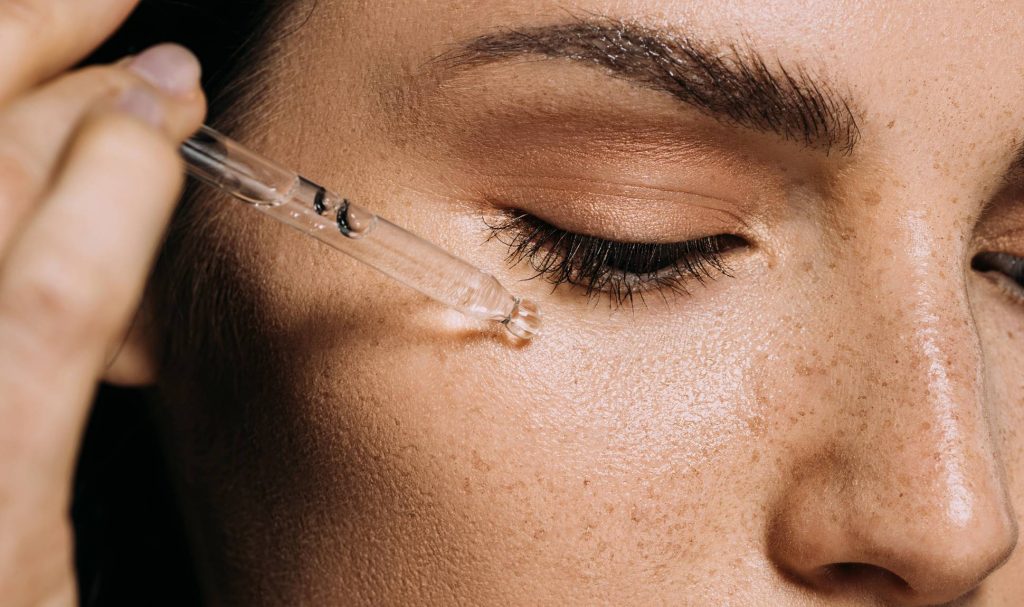Most of us want soft, smooth legs, especially when spring and summer rolls around and the weather starts to warm up. You can try to meet this goal by waxing or shaving away every last trace of hair and slathering your legs with body moisturizers and oils, but there’s a key step you may be missing: exfoliating. Exfoliating involves removing the topmost layer of dead skin cells, either mechanically (with exfoliating tools or scrubs) or chemically (with an exfoliating acid), and results in skin that looks and feels smoother and softer. Of course, if you’ve never exfoliated before, you won’t want to dive right in to scrubbing away at your skin without knowing the best practices — scrub too hard or too often, and you could end up causing irritation. Ahead, read up on expert tips for properly exfoliating your legs.
WHY EXFOLIATION IS IMPORTANT?
As mentioned, exfoliation is the process of removing dead skin cells from the outermost layer of skin. It only takes a few moments to do and the results are immediate. In addition to instantly brightening, you can expect your skin-care products to penetrate better, which can improve their effectiveness. According to the American Academy of Dermatology (AAD), if you keep up with a regular exfoliation routine, the long-term benefits include increased collagen production and younger-looking skin.
Chemical vs. Physical Exfoliation
There are two ways to exfoliate the skin: physically or chemically. Chemical exfoliation uses acids or enzymes to remove dead skin cells, while physical exfoliation uses an abrasive substance to manually remove skin cells. Here’s a deeper dive into the differences between the two.
What Is Chemical Exfoliation?
Chemical exfoliation is a milder form of exfoliation because it doesn’t involve any scrubbing. If you have sensitive skin, a chemical exfoliator — think: a mild salicylic acid peel — may be useful. However, if you have oily skin, you may be able to use a stronger chemical treatment or even a scrub with exfoliating particles (more on that later).
Alpha Hydroxy Acids (AHAs): These are the most common types of light chemical peels. AHAs are derived from natural sources like fruit, sugar or milk. The most widely used AHAs in skin-care products are glycolic acid and lactic acid.
Beta Hydroxy Acid (BHA): These are also a light chemical peel. BHAs are an effective treatment for those with oily, acne-prone skin. The most commonly-known BHA is salicylic acid.
Enzymes: If you have sensitive skin, it’s recommended to look for enzyme-based exfoliants as they come from fruits and work at a slower pace.
WHAT IS PHYSICAL EXFOLIATION?
Physical exfoliants feature particles that manually work to remove dead surface skin cells. These granules — commonly made of salt or sugar — can be large or small, depending on how abrasive you’d like your scrub to be. Because there are a variety of types on the market, it is important to search for one that will work for you and your skin type.
Exfoliating Tip #1: Make Use of Tools
Your hands may be one of the best tools at your disposal when paired with a body scrub, but they aren’t your only option for exfoliating. We spoke with Arash Akhavan, MD, FAAD, and learned that he recommends using a mildly abrasive clean loofah or exfoliating sponge to get the job done.
Exfoliating Tip #2: Don’t Be Overly Harsh
There’s no reason to treat your skin harshly when exfoliating. While the skin on your legs may be tougher than that on your face, being too rough can cause irritation and redness. The best method for exfoliation is buffing your product into your skin in small, circular motions or using an exfoliating tool in short, light strokes. You also should never exfoliate immediately after shaving, especially if you have an open cut or sunburn.
Exfoliating Tip #3: Pay Extra Attention to Certain Spots
Not everywhere on your body needs to be exfoliated to the same extent. Spots where skin is the thickest — like your knees and ankles — require more attention.
Exfoliating Tip #4: Find the Right Frequency
A common question when it comes to exfoliating is how often you should do it. Unfortunately, there is no single answer. The truth is, the frequency with which you should exfoliate depends on a few factors: your skin type and exfoliation method. “How much is too much, is a very personal question,” says dermatologist Dendy Engelman, MD. “Some people can only handle exfoliating once a week, while others need to every day.”
Typically, the more aggressive the method you use is, the less often you’ll need to exfoliate. If you aren’t sure how much exfoliation your legs can handle play it safe and start with only once a week. You can always build up to a higher frequency over time.
Exfoliating Tip #5: Remember to Count Shaving
“For those who shave their legs regularly, that is often enough exfoliation to keep your legs looking fresh and smooth,” says Dr. Akhavan. That means if you’re trying to decide whether or not to exfoliate, you may have already gotten the job done — plus, you won’t want to overdo it. “Over-exfoliating can trigger inflammation on the skin and weaken the skin’s barrier function,” Dr. Engelman says. “If the barrier function is damaged, skin can become vulnerable, more sensitive and irritated.”
Exfoliating Tip #6: Follow with Moisturizer
After exfoliating, your body care routine isn’t complete. Since exfoliating can be drying, you should always finish by applying a body lotion or cream. The best time to moisturize is immediately after exfoliating while your skin is still slightly damp from the shower.
Exfoliating Tip #7: Slough Away Skin Before Tanning
Exfoliating should be a regular part of your shower routine, but it’s more necessary in some cases than others. One situation where you really won’t want to skip exfoliating is when you plan to put on self-tanner. Exfoliating using a washcloth prior to getting your glow on can keep your color from looking blotchy.




